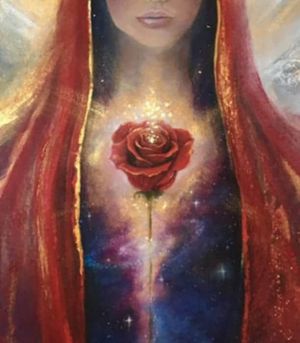WOMEN IN VAJRAYĀNA BUDDHISM--THE EMBODIMENT OF WISDOM AND ENLIGHTENMENT IN TRADITIONALLY MALE-ORIENTED BUDDHISM
Society's perceptions of women's role, not Buddhism as a doctrine, have a more influential hand in the suppression of female practitioners and their opportunity to practice Buddhism. Buddhism, in general, has been widely criticized by Western feminists for being non-egalitarian and essentially classifying women as inherently inferior to men. A multitude of religious writings attempt to establish an intrinsic patriarchal authority in Buddhism, yet many women are dedicated, successful practitioners and teachers of
Buddhist wisdom. Earlier Indian and Mahayana Buddhist texts refer to women as unable to attain enlightenment as a result of their inferior birth, although there are many mythical deities and actual enlightened women, such as Yeshe Tsogyal, Machig Labdron and Sera Khandro, whose existence proves the claim of inferiority to be otherwise. In later Vajrayana Buddhism, however, the attitude of female inferiority appears more subdued than its predecessors.
Many examples of the feminine embodiment of wisdom exist in Buddhism to make one question the inherent gender-bias attitude in Buddhism as a doctrine. Tara one such example of a female Buddha, is a widely worshipped and enlightened being. Additionally, dakinis are a female embodiment of enlightened energy and part of a tantric practice called the Three Roots - a central requirement for any Buddhist practitioner, male or female. Regardless of these feminine images and positive changes in Buddhism, the question remains: What factors deter Buddhist female practitioners and their opportunities to hold leadership positions in Buddhism?
While Vajrayana Buddhism is male-oriented with his Holiness the Dalai Lama as the most influential figure, Buddhism, as a doctrine, provides an equal opportunity to both men and women. It is predominately societies and their influential attitudes toward women that create a bulk of the obstacles for women and their prospects to practice Buddhism. There are additional guidelines, referred to as
precepts, which are particularly geared towards Buddhist nuns and place them in a position more inferior than even the most novice monk. Currently, the largest setback for females is the inability to be ordained in Vajrayana Buddhism. However, the Dalai Lama has pledged to call upon the monks' consul, in an effort to change the rules of subordinating nuns and possibly establish the bhikkhuni "a fully ordained nun" ordination in Vajrayana Buddhism.
My objective is to examine the female status in Vajrayana Buddhism in order to determine whether the sexism displayed within the discipline is inherent to Buddhism, to the Vajrayana sect, or has been gradually absorbed from surrounding cultures as the religion developed and can finally evolve and progress through recognition that gender inequality is an absorption from culture and not a religious doctrine itself. To determine this, I will examine Buddhist history and the principles which are applied to religious and
social communities, as well as the role of women in Vajrayana, and prominent female Buddhist images and leaders. After analysis of the research material, I will conclude by setting forth my determination as to whether Buddhism is inherently prejudiced against women and their leadership, thereby resulting in the female status inevitably remaining low. Or whether social transformation and improved egalitarian rights, both outside and within the Buddhist community, could alter the cultural and historical limitations imposed against the female Buddhist lineage and leadership.
Source
[[1]]
